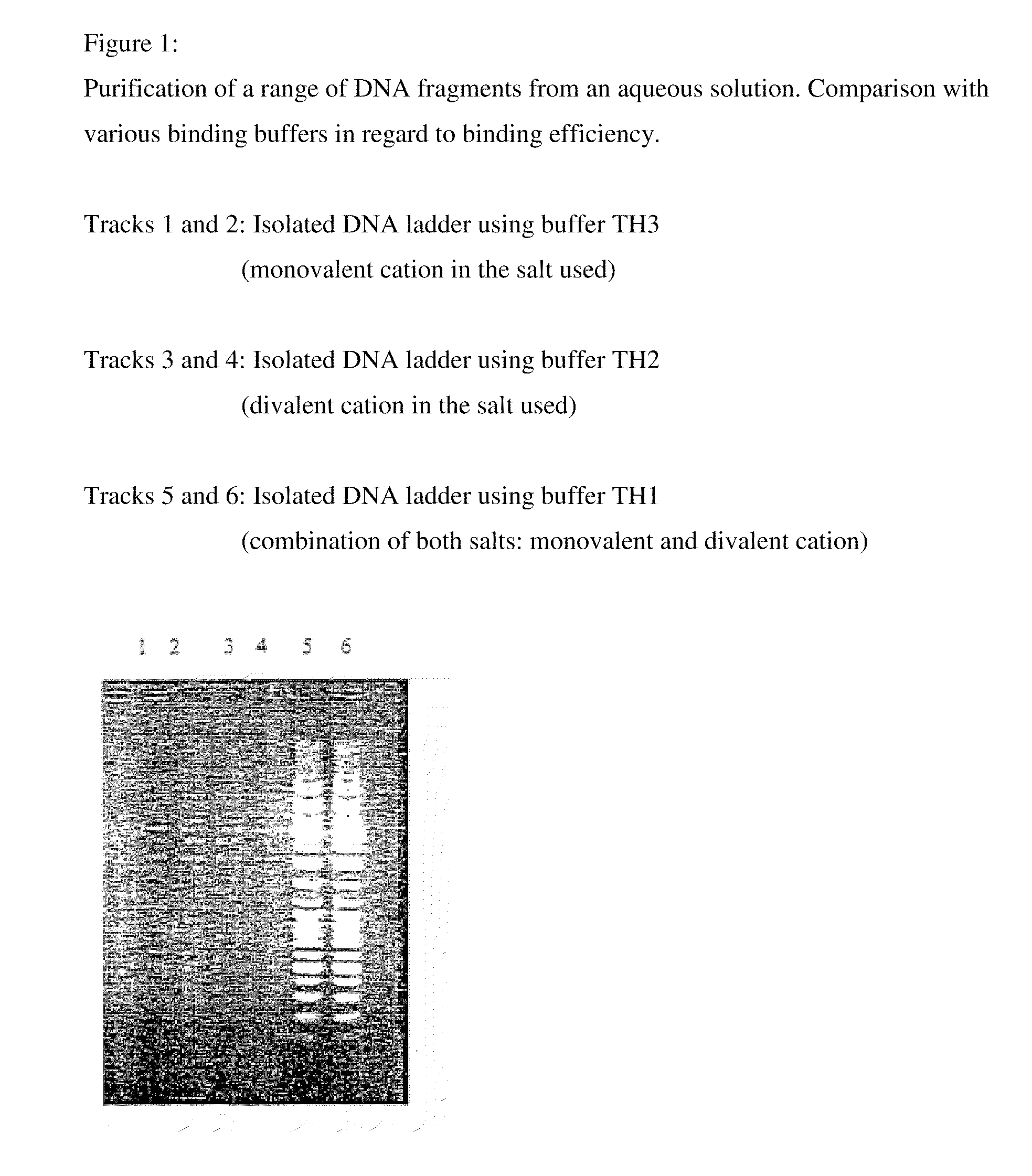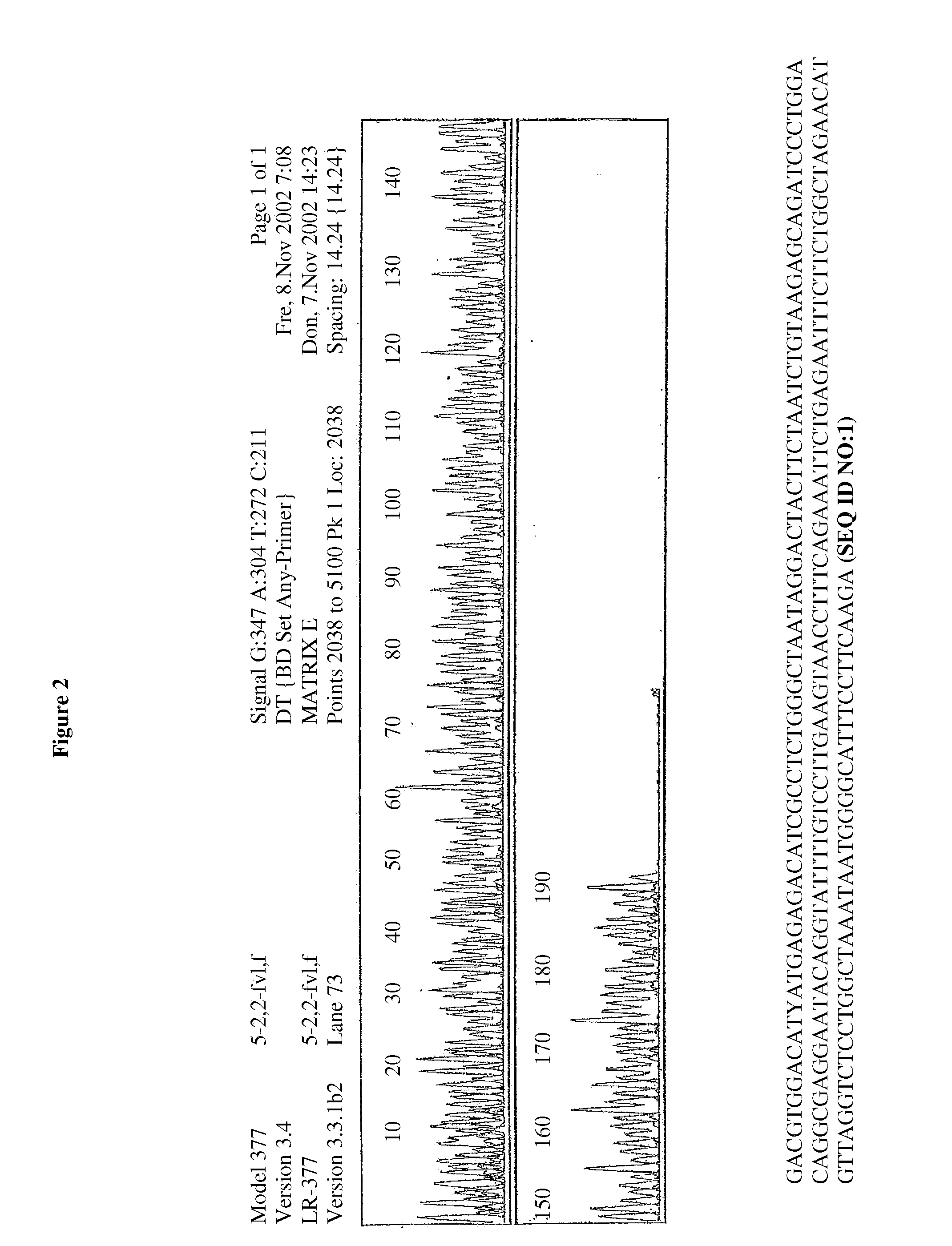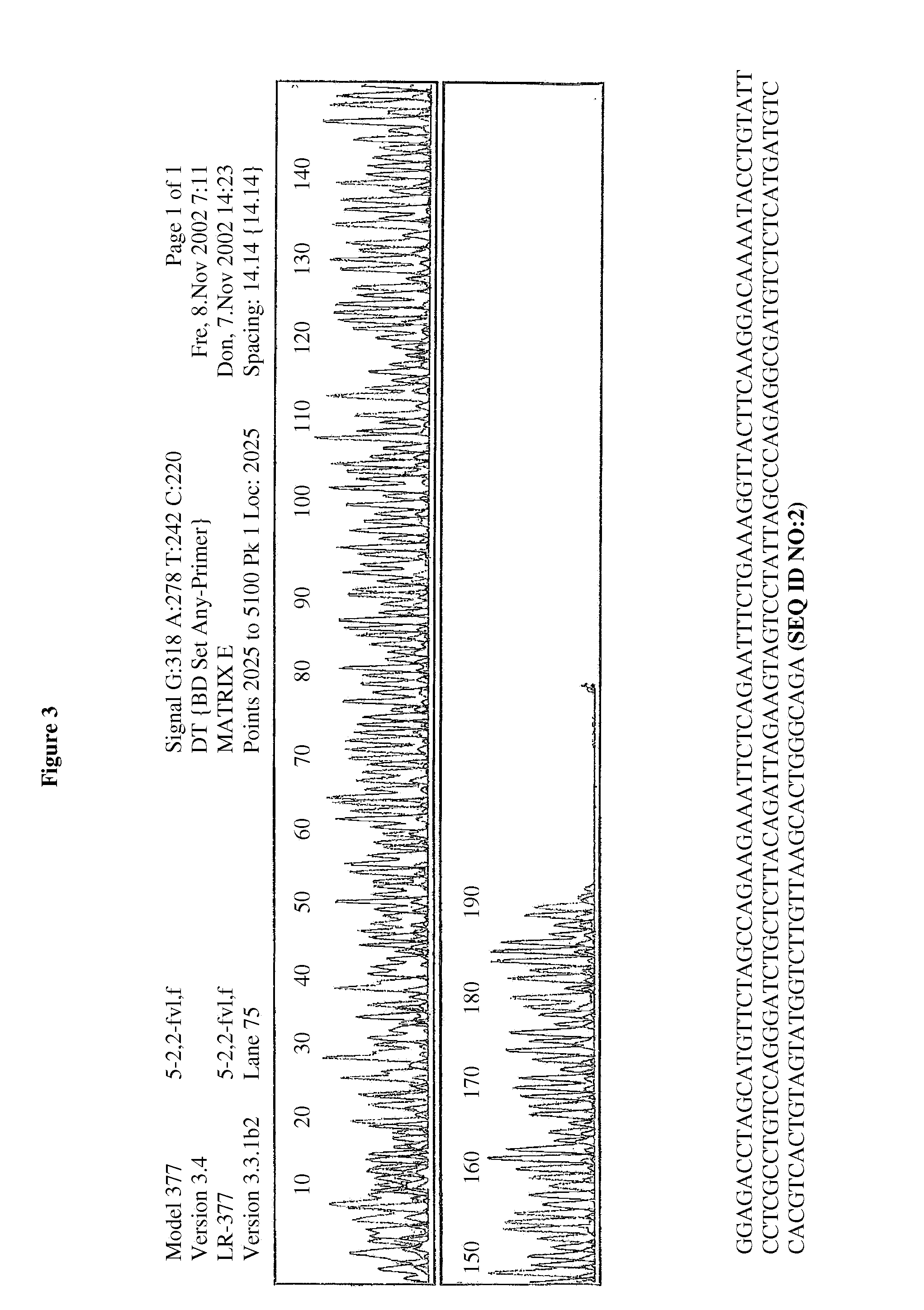Non-alcoholic buffer formulations for isolating, purifying and recovering long-chain and short-chain nucleic acids
- Summary
- Abstract
- Description
- Claims
- Application Information
AI Technical Summary
Benefits of technology
Problems solved by technology
Method used
Image
Examples
example 1
[0052]Purification of a range of DNA fragments from an aqueous solution; comparison of various binding buffers in regard to binding efficiency.
TH1 buffer (5 mM NaCl; 5 mM MgCl2 / tris HCl, isopropanol)
TH2 buffer (10 mM MgCl2 / tris HCl, isopropanol)
TH3 buffer (10 mM NaCl / tris HCl, isopropanol)
[0053]The TH1 buffer is a combination of a monovalent and divalent salt at a total strength of 10 mM. Buffers TH2 and TH3 each contain only one salt (with a monovalent cation and a divalent cation, respectively) for a total strength of 10 mM. 130 μl of the respective buffers were mixed with an aqueous 50-μl solution containing a commercial DNA ladder (Fermentas) and the solution is transferred to a centrifuge stand with a glass fiber fleece. Then, the solution was centrifuged for 1 minute at 10,000 rpm and the centrifuge column was transferred to a new reaction vessel. The elution of the bound fragments results by adding 30 μl of a 10 mM tris-HCl solution and subsequent centrifuging for 1 minute. T...
example 2
[0054]Purification of PCR products from a complex PCR reagent solution and subsequent use of the purified PCR products for DNA sequencing.
[0055]50 μl PCR reagent solutions were mixed with 130 μl of TH1 and TH4 binding buffers (50 mM NaCl; 50 mM MgCl2 / tris HCl, isopropanol), then transferred to a centrifuge column with glass fiber fleece, centrifuged for 1 minute and finally the DNA is eluated from the column using 10 mM of tris HCl. The isolated PCR products were then used for the sequencing. The sequencing results confirm that without using previously required wash steps, all interfering components were efficiently removed and high-purity DNA results (FIGS. 2-5).
example 3
[0056]Isolation of DNA plasmids from bacterial lysates. Comparison of the purity of the isolated DNA plasmids for various washing conditions or without a washing step.
[0057]2 ml of a bacterial overnight culture (XL-1 with pGEM plasmid) were centrifuged and the pellet was re-suspended with 200 μl of solution I (tris, EDTA Rnase A). Then, 200 μl of solution II (SDS / NaOH) were added. The reaction vessels were shaken carefully several times. Then 200 μl of a solution III (250 mM MgCl2 / tris HCl) were added. The reaction vessels were carefully and briefly shaken and centrifuged for 5 minutes at maximum rpm. The clarified excess was mixed with 100 μl isopropanol and given to a centrifuge column with a glass fiber fleece and centrifuged for 1 minute. Then, each of the 3 samples was immediately mixed with 10 mM tris (no washing). 3 samples were mixed with 800 μl of an alcohol-less washing buffer (10 mM NaCl / 10 mM MgCl2 / tris HCl) and centrifuged for 1 minute and then the DNA plasmid was elute...
PUM
| Property | Measurement | Unit |
|---|---|---|
| Molar density | aaaaa | aaaaa |
| Acidity | aaaaa | aaaaa |
| Acidity | aaaaa | aaaaa |
Abstract
Description
Claims
Application Information
 Login to View More
Login to View More - R&D
- Intellectual Property
- Life Sciences
- Materials
- Tech Scout
- Unparalleled Data Quality
- Higher Quality Content
- 60% Fewer Hallucinations
Browse by: Latest US Patents, China's latest patents, Technical Efficacy Thesaurus, Application Domain, Technology Topic, Popular Technical Reports.
© 2025 PatSnap. All rights reserved.Legal|Privacy policy|Modern Slavery Act Transparency Statement|Sitemap|About US| Contact US: help@patsnap.com



